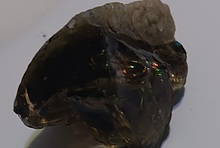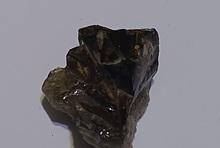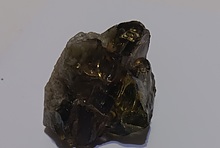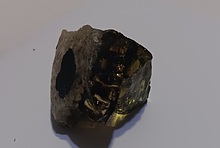Home PageAbout MindatThe Mindat ManualHistory of MindatCopyright StatusWho We AreContact UsAdvertise on Mindat
Donate to MindatCorporate SponsorshipSponsor a PageSponsored PagesMindat AdvertisersAdvertise on Mindat
Learning CenterWhat is a mineral?The most common minerals on earthInformation for EducatorsMindat ArticlesThe ElementsThe Rock H. Currier Digital LibraryGeologic Time
Minerals by PropertiesMinerals by ChemistryAdvanced Locality SearchRandom MineralRandom LocalitySearch by minIDLocalities Near MeSearch ArticlesSearch GlossaryMore Search Options
The Mindat ManualAdd a New PhotoRate PhotosLocality Edit ReportCoordinate Completion ReportAdd Glossary Item
Mining CompaniesStatisticsUsersMineral MuseumsClubs & OrganizationsMineral Shows & EventsThe Mindat DirectoryDevice SettingsThe Mineral Quiz
Photo SearchPhoto GalleriesSearch by ColorNew Photos TodayNew Photos YesterdayMembers' Photo GalleriesPast Photo of the Day GalleryPhotography
╳Discussions
💬 Home🔎 Search📅 LatestGroups
EducationOpen discussion area.Fakes & FraudsOpen discussion area.Field CollectingOpen discussion area.FossilsOpen discussion area.Gems and GemologyOpen discussion area.GeneralOpen discussion area.How to ContributeOpen discussion area.Identity HelpOpen discussion area.Improving Mindat.orgOpen discussion area.LocalitiesOpen discussion area.Lost and Stolen SpecimensOpen discussion area.MarketplaceOpen discussion area.MeteoritesOpen discussion area.Mindat ProductsOpen discussion area.Mineral ExchangesOpen discussion area.Mineral PhotographyOpen discussion area.Mineral ShowsOpen discussion area.Mineralogical ClassificationOpen discussion area.Mineralogy CourseOpen discussion area.MineralsOpen discussion area.Minerals and MuseumsOpen discussion area.PhotosOpen discussion area.Techniques for CollectorsOpen discussion area.The Rock H. Currier Digital LibraryOpen discussion area.UV MineralsOpen discussion area.Recent Images in Discussions
Mineralogical ClassificationKingstonite forthcoming Min.Mag. v. 69

21st Aug 2005 14:44 UTCMarco E. Ciriotti
The description-type of the new species kingstonite (IMA 93-046) is announced as forthcoming in the next Mineralogical Magazine:
- C.J. Stanley, A.J. Criddle, J. Spratt, A.C. Roberts, J.T. Szymanski and M.D. Welch (2005): Kingstonite, (Rh,Ir,Pt)S4, a new mineral species from Yubdo, Ethiopia. Mineralogical Magazine, 69(4), (in press).

22nd Aug 2005 01:52 UTCJim Ferraiolo
from http://www.cst.cmich.edu/users/dietr1rv/conglomerate.htm -
"Kingstonite - name given to a conglomerate with its matrix and even some of its clasts, nearly all of which are pebble-size, replaced by native copper. This rock, which comprises parts of some of the ore bodies of the famous Copper District of Michigan's Keweenaw Peninsula, has been fashioned by lapidaries into such things as bookends."

27th Sep 2005 09:55 UTCMarco E. Ciriotti
Reference:
• Stanley, C.J., Criddle, A.J., Spratt, J., Roberts, A.C., Szymanski, J.T., Welch, M.D. (2005): Kingstonite, (Rh,Ir,Pt)S4, a new mineral species from Yubdo, Ethiopia. Mineralogical Magazine, 69(4), 447-453.
Abstract:
Kingstonite, ideally Rh3S4, is a new mineral from the Bir Bir river, Yubdo District, Wallaga Province, Ethiopia. It occurs as subhedral, tabular elongate to anhedral inclusions in a Pt-Fe nugget with the associated minerals isoferroplatinum, tetraferroplatinum, a Cu-bearing Pt-Fe alloy, osmium, enriched oxide remnants of osmium, laurite, bowieite, ferrorhodsite and cuprorhodsite. It is opaque with a metallic lustre, has a black streak, is brittle and has a subconchoidal fracture and a good cleavage parallel to <001>. VHN25 is 871–920 kg/mm2. In plane-polarized reflected light, kingstonite is a pale slightly brownish grey colour. It is weakly pleochroic and displays a weak bireflectance. It does not possess internal reflections. The anisotropy is weak to moderate in dull greys and browns. Reflectance data and colour values are tabulated. Average results of twenty electron microprobe analyses on four grains give Rh 46.5, Ir 16.4, Pt 11.2, S 25.6, total 99.7 wt.%. The empirical formula is (Rh2.27Ir0.43Pt0.29)2.99S4.01, based on 7 atoms per formula unit (a.p.f.u.). Kingstonite is monoclinic (C2/m) with a = 10.4616(5), b = 10.7527(5), c = 6.2648(3) Å, ß = 109.000(5)°, V = 666.34(1) Å3 (Z = 6). The calculated density is 7.52 g/cm3 (on the basis of the empirical formula and unit-cell parameters refined from powder data). The seven strongest X-ray powder-diffraction lines are: 3.156 (100) (310), 3.081 (100) (31), 2.957 (90) (002), 2.234 (60) (202), 1.941 (50) (23), 1.871 (80) (41) and 1.791 (90) (060, 33). The structure of kingstonite was solved and refined to Rp = 3.8%. There are four distinct metal sites with Rh occupancies of 0.64–0.89. Two metal sites are regular RhS6 octahedra that share edges to form a ribbon running parallel to c. The other two metal sites are coordinated by 4 S + 2 Rh and 5 S + 2 Rh and define a puckered Rh6 ring. The ribbons of regular RhS6 octahedra alternate with the columns of Rh6 rings linked by S atoms. S–S bridges also connect the ribbons and columns. As such, the kingstonite structure is essentially that of synthetic Rh3S4. Minor differences in the unit-cell parameters, atom coordinates and displacement parameters of kingstonite and synthetic Rh3S4 arise from the considerable substitution of Ir for Rh. The mineral name honours Gordon Kingston (formerly of Cardiff University) in recognition of his contributions to platinum group element mineralogy and the geology of their mineral deposits.

27th Sep 2005 10:35 UTCPeter Haas




Mindat.org is an outreach project of the Hudson Institute of Mineralogy, a 501(c)(3) not-for-profit organization.
Copyright © mindat.org and the Hudson Institute of Mineralogy 1993-2024, except where stated. Most political location boundaries are © OpenStreetMap contributors. Mindat.org relies on the contributions of thousands of members and supporters. Founded in 2000 by Jolyon Ralph.
Privacy Policy - Terms & Conditions - Contact Us / DMCA issues - Report a bug/vulnerability Current server date and time: April 19, 2024 04:22:33
Copyright © mindat.org and the Hudson Institute of Mineralogy 1993-2024, except where stated. Most political location boundaries are © OpenStreetMap contributors. Mindat.org relies on the contributions of thousands of members and supporters. Founded in 2000 by Jolyon Ralph.
Privacy Policy - Terms & Conditions - Contact Us / DMCA issues - Report a bug/vulnerability Current server date and time: April 19, 2024 04:22:33











